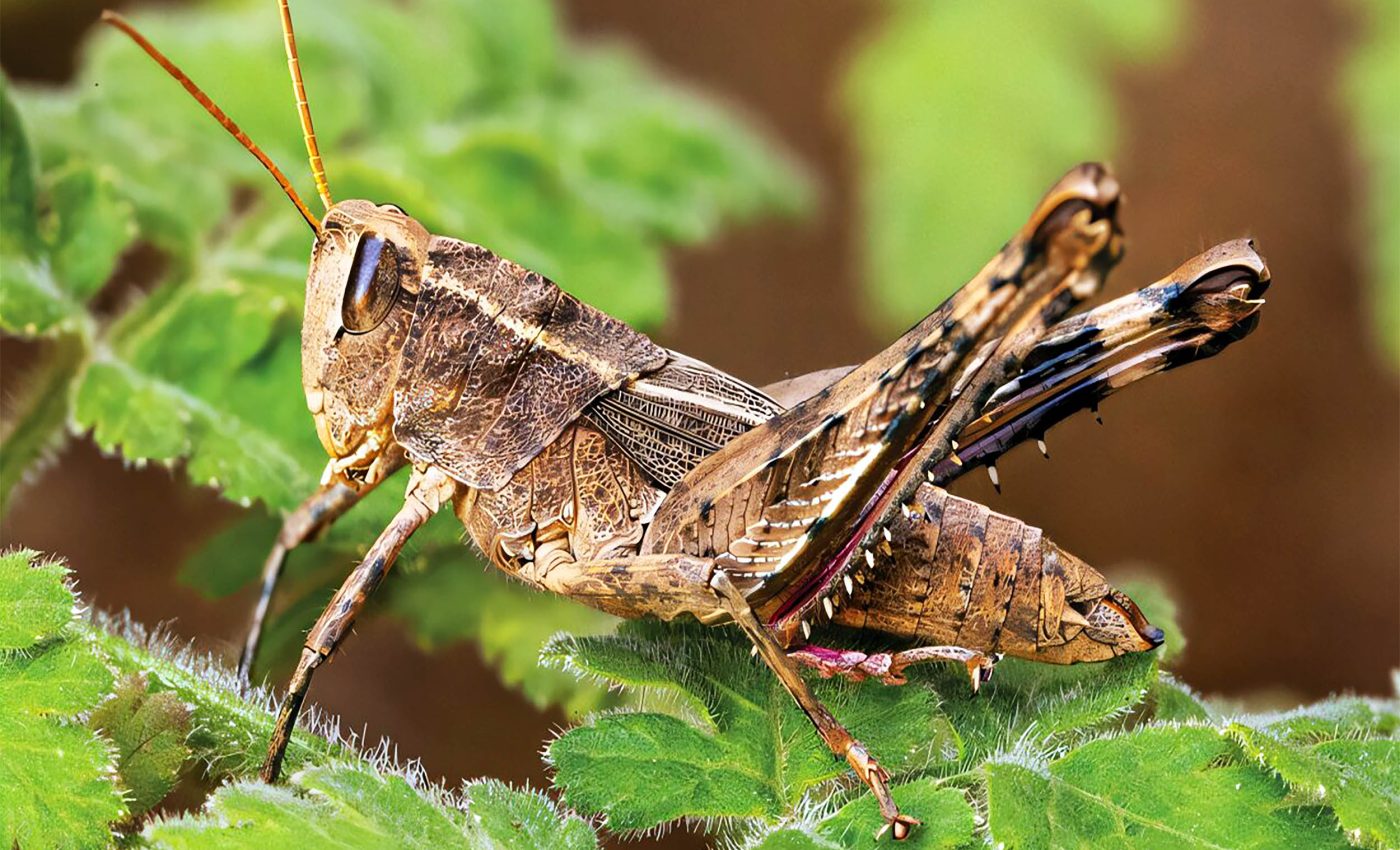
Grasshopper species presumed extinct for 43 years was recently rediscovered
In 1980, a single male grasshopper was collected on São Nicolau, Cape Verde. After that, silence. For decades, the Monte Gordo grasshopper (Eyprepocprifas insularis) was lost to science.
Declared extinct in 1996, the grasshopper returned in 2023 – thanks to a pair of curious biologists and a night walk under torchlight.
An extinct grasshopper re-emerges
Rob Felix and Annelies Jacobs were on a casual field holiday in Cape Verde when they made the discovery.
“During a night walk, on our first evening on São Nicolau, to a colony of a unique seabird species, the Fea, I stumbled upon a grasshopper sitting on the path,” said Felix.
“When I looked closer in the torch’s light, I immediately recognized its unique appearance. I shouted out loud, ‘It’s Eyprepocprifas!’ To my surprise, correct at once, because it’s not the most easily pronounceable genus name.”
In the days that followed, they found more specimens – male, female, and nymphs – mainly on Monte Gordo’s steep slopes.
A living fossil in a fragile ecosystem
Eyprepocprifas insularis is unique. It is the only short-winged grasshopper species endemic to Cape Verde.
The grasshopper has survived in isolation for likely millions of years, earning its title as a “living fossil.” Its lineage shows little evolutionary change and few living relatives.
“E. insularis must have been there for a very long time and has been able to withstand the severe ecological conditions,” noted the study authors.
Cape Verde’s rugged mountains and erratic climate likely shaped this insect’s unusual features. Its tough exoskeleton may help it withstand harsh droughts and limit water loss.
Threats to the Monte Gordo grasshopper
Monte Gordo Natural Park is a protected area on São Nicolau Island in Cape Verde. It includes high mountain landscapes that provide the only known home for the Monte Gordo grasshopper.
The park’s highlands have different types of plant life. Some areas are filled with native shrubs, especially a plant called Euphorbia tuckeyana, which only grows in Cape Verde.
Other areas were replanted in the past with foreign trees like pine, eucalyptus, and cypress. These changes affect the local habitat, but some patches of natural vegetation remain.
The grasshopper lives in the higher parts of this park – between 650 and 1,100 meters (2,130 to 3,610 feet) above sea level. It prefers the moist, cooler slopes that face northeast. These areas often have rocky ground and are covered in fog, which provides much-needed moisture in an otherwise dry climate.
Vulnerable grasshopper with a tiny range
Even though scientists found several of these grasshoppers during the 2023 rediscovery, they were all located in the northern section of the park.
This shows the insect lives in a very limited area. Its total occupied space is only about 12 square kilometers (4.6 square miles).
Because of its tiny range and the risk from environmental changes, the grasshopper is listed as “Vulnerable” by the IUCN. This label means it could become extinct if its habitat is damaged further.
Grasshoppers with jumping power
E. insularis has remarkable jumping power and may be active both day and night. Most adults were spotted sitting quietly on the ground or on rocks.
When disturbed, they leap far – using strong hind legs. Nymphs were observed on plants like Asteriscus smithii, suggesting host-plant interactions that are still unknown to science.
Mounting these grasshoppers for study was also difficult. The researchers needed great force to pierce their bodies with pins, indicating a very dense, water-conserving cuticle. This feature may be another adaptation to dry island conditions.
What changed their habitat?
Before human settlement, São Nicolau’s highlands supported dense native woodlands. That changed drastically in the last 400 years. Introduced species replaced native flora.
Grazing, deforestation, and fire damaged the landscape. Droughts and storms added further stress.
The insect’s ability to survive in degraded and partially reforested areas shows some flexibility. But that does not guarantee safety. The decline of key plants or food fungi could trigger a population crash.
Saving a unique grasshopper
“Now that it has been found again, we have the opportunity to take steps to protect this unique species and its habitat,” noted the researchers.
Conservation efforts already exist in Monte Gordo, including replanting native flora and controlling grazing. These efforts now gain urgency to save the grasshopper, once thought to be extinct, from vanishing forever.
The researchers recommend prioritizing the moist, least drought-prone areas – particularly north-facing slopes – for habitat protection.
There is also potential for more discoveries. During their brief fieldwork, Rob and Annelies noted several insect species not previously recorded in Cape Verde. The archipelago may still hide more surprises.
Back from the edge of extinction
Eyprepocprifas insularis has returned from the edge of extinction. But its future depends on what comes next – science, policy, and our respect for its fragile mountain home.
The rediscovery also brought renewed attention to the earlier work of Michel Lecoq, who first described the grasshopper and later declared it extinct.
Lecoq is affiliated with CIRAD (French Agricultural Research Centre for International Development) and the CBGP (Centre de Biologie pour la Gestion des Populations), University of Montpellier, France.
The study is published in the Journal of Orthoptera Research.
—–
Like what you read? Subscribe to our newsletter for engaging articles, exclusive content, and the latest updates.
Check us out on EarthSnap, a free app brought to you by Eric Ralls and Earth.com.
—–














